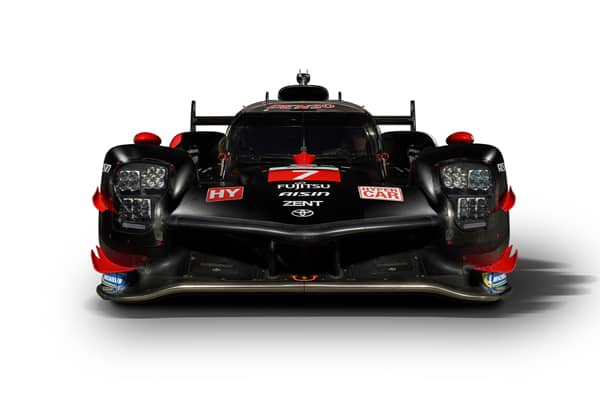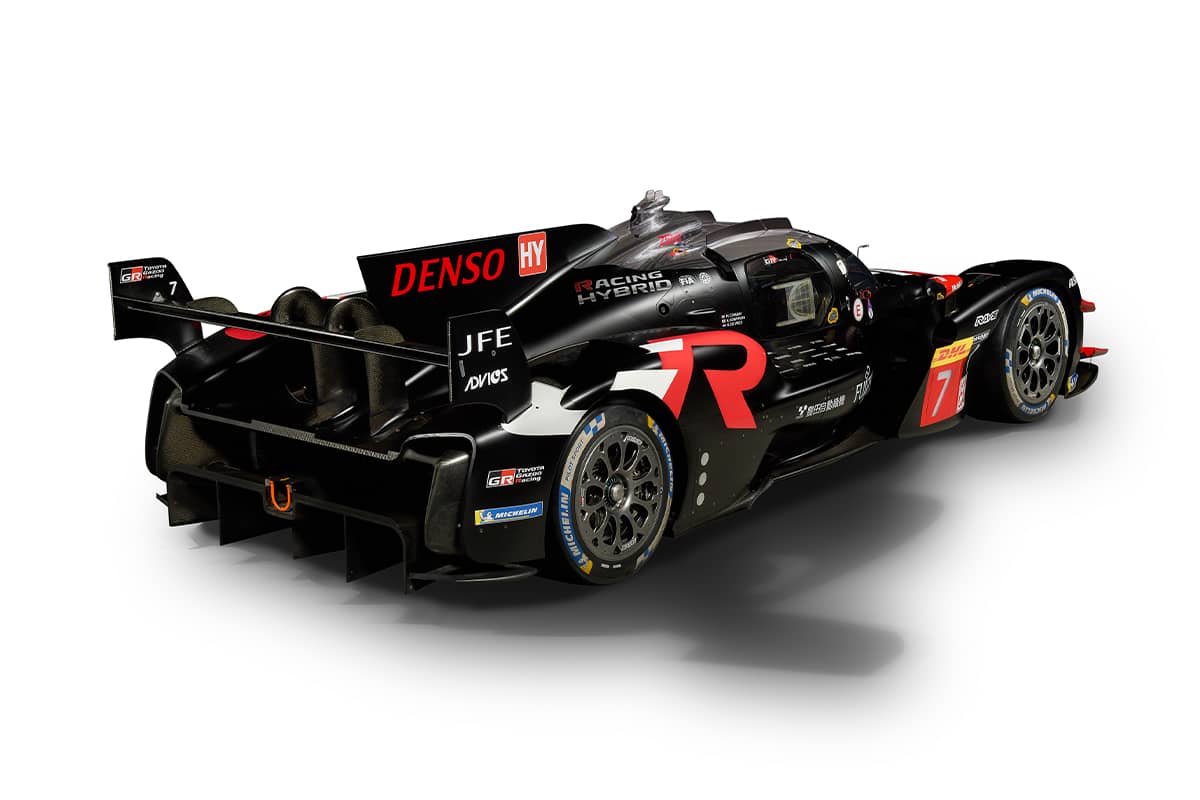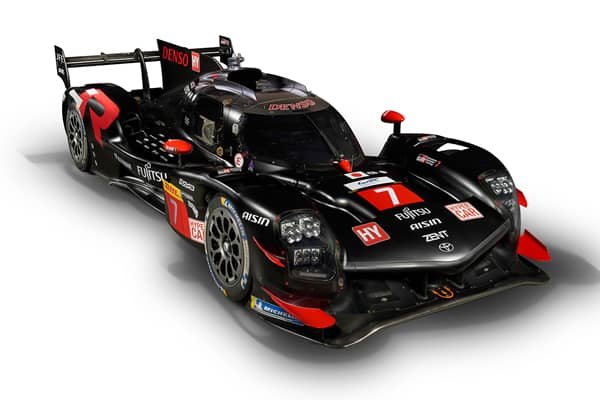INTRODUCING THE GR010 HYBRID.
The fourth year for the “GR010 HYBRID”
The sporting regulations of WEC (World Endurance Championship) for the Hypercar class (LMH) specify that the basic components of newly developed cars cannot undergo further revisions for a period of five seasons, referred to as a homologation cycle. For this reason, in the case of the GR010 HYBRID, which debuted in the 2021, the inaugural year of the LMH class, no further development in these areas is allowed until the 2025 season, which means that the basic components of the 2024 model GR010 HYBRID are the same as those continued from the 2021 model.
On the other hand, cars of the rival carmakers that entered the LMH class in 2022 or later had time to analyze the LMH class races and then develop cars with the latest technologies and knowledge avalable. This means that it is possible such models developed later may have strengths that are superior to the GR010 HYBRID, since its basic components have remained the same since 2021. In order to compete against new rivals like these, the TOYOTA GAZOO Racing (hereinafter TGR) development team has developed the 2024 model with the most suitable improvements in the limited development areas where revisions are allowed.
Simply increasing the vehicle’s (power) performance or aerodynamics can result in wasted efforts due to the application of so-called BoP performance adjustments imposed afterwards. When the TGR development team analyzed the 2023 season data, no clear weaknesses were found in terms of absolute performance compared with the rival cars. So, rather than focusing on absolute performance, the team focused its development efforts for the 2024 model in the areas such as reliability, drivability and serviceability.
As a result, the bodywork of the 2024 model GR010 HYBRID is basically the same as that carried on from the 2023 model. In terms of differences that can be recognized from the exterior, they are limited to the headlight assembly and the fuel cap. Due to feedback from the drivers that the headlight beam was not bright enough, the reflector construction was changed for this year. This resulted in a broader field of light that improves visibility. As for the fuel cap, whereas on the 2023 model it was located on the righthand side of the body, to improve refueling efficiency on circuits with counterclockwise designs, the 2024 model has caps on both sides of the car so that it can be refueled from either side. Both are revisions that improve drivability or driving efficiency.
Although it can’t be seen from the outside, the overly high-spec anti-roll bar that had been in place from the model’s debut was revised this time with a simpler system which also features improved serviceability. What’s more, to increase reliability, measures were taken to improve sensor performance and thermal insulation.
As the GR010 HYBRID enters the fourth season since its debut, its degree of overall maturity has been heightened and the reliability of its performance increased in ways that keep it competitive against the later rival machines. And the goal for the 2024 season will be to achieve their seventh consecutive double titles in the WEC world championship and to add to the team’s number of victories in the 24 Hours of Le Mans.
VEHICLE SPECS
| Bodywork | Carbon fibre composite |
|---|---|
| Gearbox | Transversal with 7 gears sequential |
| Driveshafts | Constant velocity tripod plunge-joint driveshafts |
| Clutch | Multidisc |
| Differential | Mechanical locking differential |
| Suspension | Independent front and rear double wishbone, pushrod-system |
| Springs | Torsion bars |
| Anti roll bars | Front and rear |
| Steering | Hydraulically assisted |
| Brakes | Akebono mono-block alloy callipers with carbon ventilated discs |
| Rims | RAYS magnesium alloy, Front: 12.5 x 18 inch Rear: 14 x 18 inch |
| Tyres | Michelin radial Front: 29/71-18 Rear: 34/71-18 |
| Length | 4900 mm |
| Width | 2000 mm |
| Height | 1150 mm |
| Weight | 1040kg |
| Fuel capacity | 90 litres |
| Engine | V6 direct injection twin-turbo |
| Valves | 4 per cylinder |
| Engine capacity | 3.5 Litre |
| Fuel | Petrol |
| Engine power | 520 kW / 707PS |
| Hybrid power | 200 kW / 272PS |
| Battery | High-powered TOYOTA lithium-ion battery |
| Front motor/Inverter | AISIN / DENSO |






